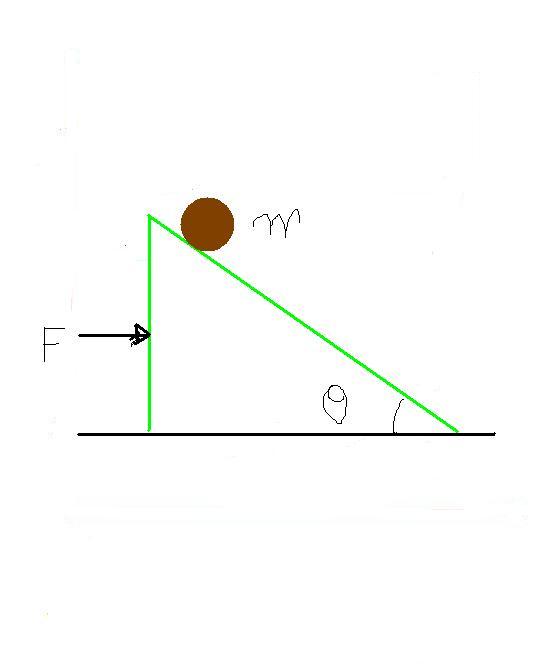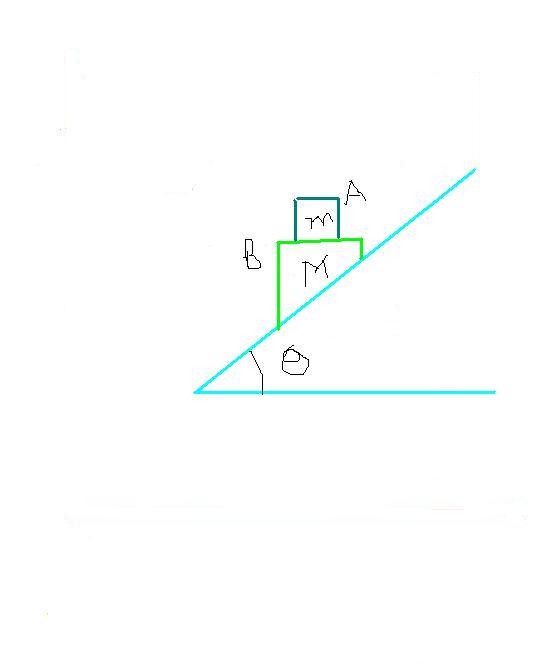last part of both Questions very unclear
 1)In the figure, the wedge is acted on by a constant horizontal force F. The wedge is moving on a smooth horizontal surface. A ball of mass m is at rest relative to the wedge. Show that the ratio of the force exerted on m by the wedge when F is acting and F is withdrawn (and wedge is not allow to move assuming no friction b/w the wedge and the ball) is F / [(M+m)g sin theta cos theta]
1)In the figure, the wedge is acted on by a constant horizontal force F. The wedge is moving on a smooth horizontal surface. A ball of mass m is at rest relative to the wedge. Show that the ratio of the force exerted on m by the wedge when F is acting and F is withdrawn (and wedge is not allow to move assuming no friction b/w the wedge and the ball) is F / [(M+m)g sin theta cos theta]
2)
The coefficient of friction b/w block A of mass m and wedge B of mass M is @. There is no friction b/w the wedge and the plane. If the system (A+B) is released so that there is no sliding b/w A and B, show that the max possible inclination tan theta = @>
-
UP 0 DOWN 0 0 3

3 Answers
For the first one
when force f is not acting [Taking theta = Ø ]
normal by wedge on ball , N1 = mg cos Ø .....................(1)
when f is applied,
total acceleration of wedge & ball, a = F/ (M+m)
we have to make the fbd of ball with respect to the vedge
in this there will be three forces mg, N & ma ( becoz we are seeing w.r.t. wedge )
ball is at rest with respect to wedge,
so, horizontal forces, N2 sinØ = ma
N2 = ma / sinØ
N2 = mF/(M+m) sinØ............(2)
(2)/ (1) .....
N2 /N1 = F/(M+m)g sin Ø cos Ø